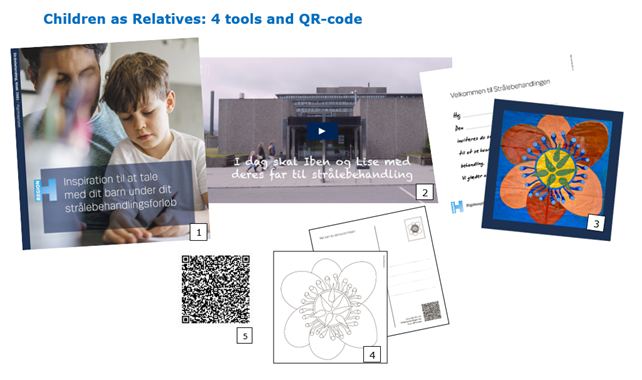Children As Relatives to Patients in Radiotherapy
Ann Christin Lund,
Denmark
PO-2298
Abstract
Children As Relatives to Patients in Radiotherapy
Authors: Ann Christin Lund1, Kaja Margrethe Skak1, Sarah F Jørgensen1, Kristina S S Funder2, Nete Hjortholm3, Louise M Lindstrøm4, Jesper Rendsmark5, Vibeke N Hansen1
1Rigshospitalet, Department of Oncology, Copenhagen, Denmark; 2Rigshospitalet, Department og Oncology, Copenhagen, Denmark; 3Rigshospitalet, Depaetment of Oncology, Copenhagen, Denmark; 4Rigshospitalet , CKO, Copenhagen, Denmark; 5Rigshospitalet, CKO, Copenhagen, Denmark
Show Affiliations
Hide Affiliations
Purpose or Objective
The aim of this project is to develop a tool to inspire the patients to include their children during their cancer treatment to prevent anxiety and serious mental health issues in the child.
In Denmark app. 80.000 children and young adults/year lives with a parent who has a life-threatening disease. Often the parents have obstacles in sharing their cancer diagnosis this may leave the children with multiple mental health issues.
Furthermore, addressing this issue with patients who are parents can be challenging for the RTT without a tool. In Denmark, no such material related to radiotherapy is accessible; therefore, we aim to develop such a tool.
Material and Methods
5 RTTs have been on a course in “Responsible for children as Relatives”. As a result of this we wanted to develop some tools for the RTT’s, which they could use in their RTT practice. This will help systemise and establish a dialog with the parent to involve their children.
We wanted a set of tools that inspired the patient to involve their children, and a video material to support the conversation between the parent and the child. Furthermore, we wanted to make an invitation to the children to systemise their visit to the clinic.
The material was developed with support from a psychologist, a communication specialist, and a former patient (and parent) from the clinic.
Results
4 tools are developed to systemise the workflow in the clinic 3 tools are developed for use before the child visits the clinic:
• A folder Inspiration to Talk to Your Child During Radiotherapy (1)
• An invitation to the child, as a postcard Dear… you invited to see where your …. goes to treatment …. (2)
• A video Today Iben and Lise are Going with Their Dad to Radiotherapy (3)
1 tool for use during the child’s visit to the clinic:
• A postcard which the child can color and write a message to someone they care for. (4)
All written tools include a QR-code to the video. (5)
Some early responses have been:
“I had not thought about that showing my daughter the everyday treatment could be such an eye opener for her.”
“Seeing that movie with my children made it much easier to talk about where I go every day, now where we live so far from the hospital.”
RTTs have explained: “I really looked forward to the material getting finished – it was so much easier to start a dialog with the patient, we sort of had a frame to talk in.”

Conclusion
We have systemised the workflow in the clinic for children as relatives to patients in radiotherapy, to empower the parents to engage the children in their treatment. 4 tools are developed and implemented. In the future we plan to monitor the outcome of this intervention through a questionnaire for the parents and through interviews of RTTs. Initial response is very positive.